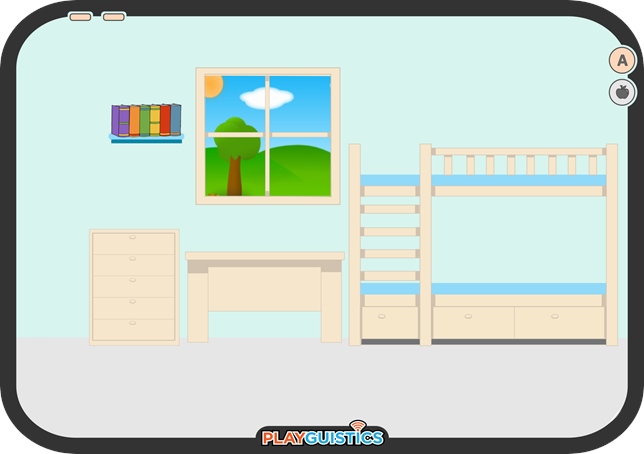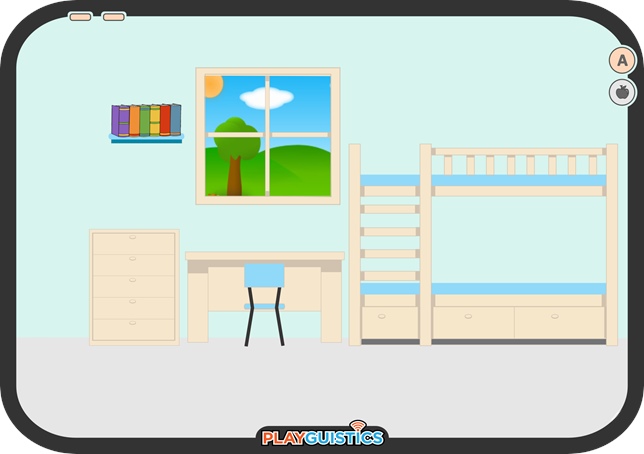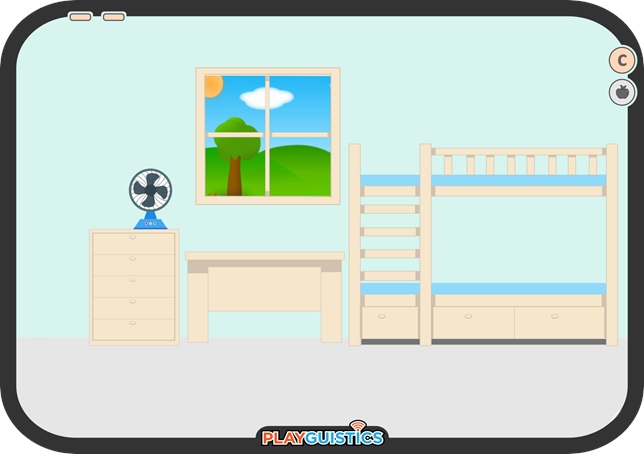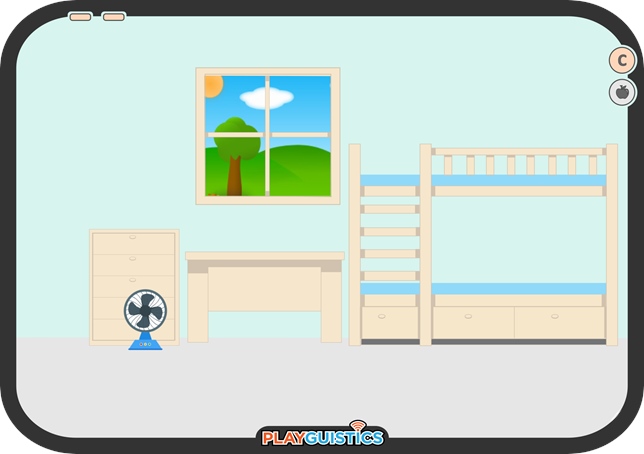About This Activity
|
Overview Bedroom Cards is a simple game suitable for beginners that will allow for fun, repeated practice of common bedroom related vocabulary. Students can play this game after memorizing as few as 9 vocabulary words. The game can also be used to practice using prepositions. Set C contains 16 cards where the only difference between many cards is whether a specific object is "beside the dresser," "in front of the dresser," "on the dresser," "on the desk," "in front of the bed," or "on the bed." Currently, 3 different sets of 16 cards are available for this game. As a deduction card game, players need to use their verbal skills to deduce which of the cards laid out in front of them matches the "secret card" in their activity partner's possession. |
|
|||
|
Set A card with a bed,
|
Set A card identical to the
|
|
How To Play Materials: Two sets of 16 identical Bedroom Cards are needed for each pair of two participants. This means two sets of Set A or two sets of Set B or two sets of Set C. Time / Game Round: 1-3 minutes
For more detailed instructions for how to print, prepare, and introduce card-based deduction games like this one, click the blue button below. |
|
|||
Printing & Preparation Instructions
Words to Learn Before Playing
The Core Vocabulary Words listed below are all words that students should learn BEFORE playing this game. Students will only need to learn the words listed for Set A to play this game with that set of cards. However, to play the game with Set B, students will need to learn the words for both Set A and Set B. Likewise, to play the game with Set C, students will need to learn the words for Set C and all previous sets.
| Core Vocabulary Words Used in Activity | |||||||||
| Card Set A | bed, bedroom, books, chair, desk, dresser, fan, shelf, window | ||||||||
| Card Set B | basketball, computer, drum, fishbowl, guitar, robot, teddy-bear, umbrella, | ||||||||
| Card Set C | beside, in-front-of, on | ||||||||
Important Notes:
- Currently, three different card sets for Bedroom Cards are available. To play with each set of cards, students need to learn the Core Vocabulary Words listed for that set AND all previous sets.
- The first set, Set A, contains the core bedroom related vocabulary, primarily furniture found in bedrooms. The subsequence sets contain objects that might be found in bedrooms or prepositions that can be used to describe the location of the objects introduced in other card sets. The following two cards are from Set C and are identical other than the location of the fan. Students would need to use prepositions to describe the difference between these two cards.
|
Set C card with a
|
Set C card with a fan
|
- It's entirely possible (and even recommended, once your students understand the game) to combine more than one set of cards together to create a more varied and interesting card deck.
Words to Learn While Playing
The following words will be used to the play this game (with every available set of cards). However, these words don't need to be pre-taught. These words can and should be learned WHILE playing the game.
| Vocabulary Best Learned In Context | |||||||||
| Used With All Sets | a/an, card, do, don't, see, in, is, isn't, it, no, the, this, yes, you, your | ||||||||
Sentence Patterns to Use While Playing
The following sentences and sentence patterns are recommended for use while playing this game. The best way to teach these sentences, is to use them in context while introducing the game and demonstrating how to play it.
| Standard Sentences and Sentence Patterns |
| Do you see a _________________ in the bedroom? |
| Do you see a _________________ on / in front of / beside the _________________? |
| Yes, I do. / No, I don't. |
| Is this your card? |
| Yes, it is. / No, it isn't. |





